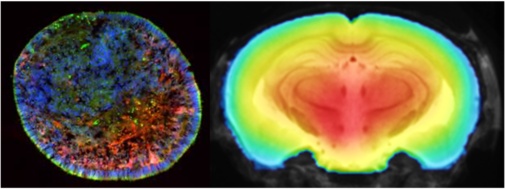
Projects (2nd Funding Period)
New projects starting in 2023
+++under construction+++
C2:Glial TSPO in retina and brain models - Niemann-Pick type C (NPC)
Antje Grosche, Sabina Tahirovic (Munich)
Biological functions of glial TSPO in retina and brain models of the cholesterol storage disease Niemann-Pick type C (NPC)

Translocator protein 18 kDa (TSPO) is an integral protein of the outer mitochondrial membrane. Although its cellular functions are still debated, it is thought to play a role in neurosteroidogenesis, mitochondrial function, cell metabolism and neuroinflammation. In the central nervous system (CNS), TSPO expression is predominantly found in ependymal cells, microglia, and astrocytes, but its cellular expression pattern largely changes under neuroinflammatory and neurodegenerative conditions. For the retina, TSPO was reported to be a regulator of cholesterol and neurosteroid metabolism, so this part of the CNS can serve as an ideal and, most importantly, easy-to-study model to analyze cell-type-specific beneficial or detrimental effects of TSPO. In the healthy tissue, we detected the highest TSPO expression in Müller cells, the major macroglia in the retina. In contrast, in retinal pathologies, TSPO is strongly upregulated by reactive microglia. Our research project specifically aims to compare the function of glial TSPO in the retina with results from corresponding cell types in the brain. To determine the function of TSPO under physiological and neurodegenerative conditions, we selected the Niemann Pick type C (NPC) metabolic disease model with distinct retinal and brain pathology. This monogenetic disease – predominantly caused by the loss of NPC1 function – is characterized by cholesterol storage and metabolic defects. In our new microglia-specific NPC1 knockout model, we found early cell autonomous defects of microglia and massive upregulation of microglial TSPO. These microglial deficits resulted in pathological changes in other cell types such as astrocytes and neurons in various CNS regions, including the retina. Therefore, this model provides a unique opportunity to study the functions of TSPO in glial cholesterol transport, neurosteroidogenesis, neuroinflammation, and cellular metabolism in the retina and brain. We aim to clarify whether an increase in glial TSPO triggers protective or detrimental responses in the CNS and how this may contribute to neuropathology. In a translational approach, we will analyze the effect of TSPO loss on glial functions including cholesterol metabolism and neurosteroid biosynthesis in human retinal organoids with and without microglia under homeostatic and NPC conditions. These comparative studies of TSPO signaling cascades in murine and human glia will help to significantly expand our understanding of TSPO biology and its relevance to human disease.
